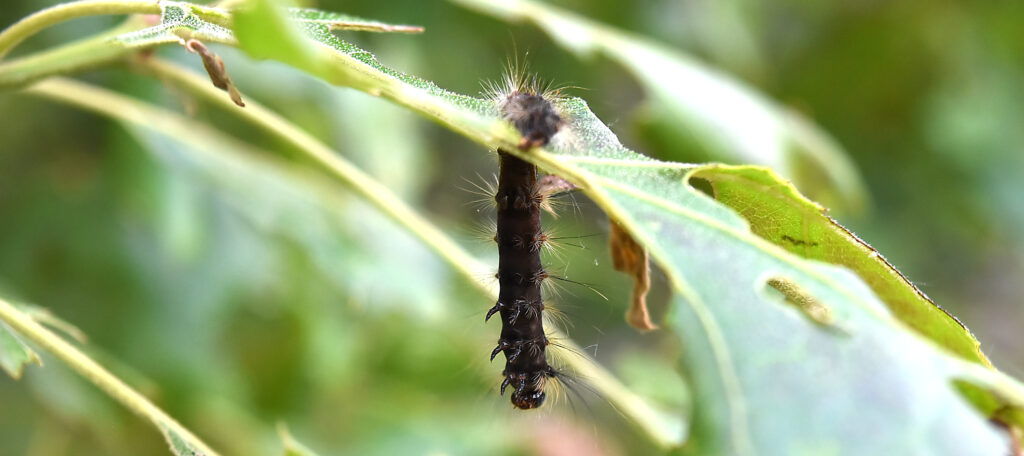
By James Hanlon
Leader Staff Writer
As reported in last week’s Oxford Leader, gypsy moths have invaded north Oakland County. Mercifully, they are approaching the end of the destructive phase of their lifecycle as the leaf-eating caterpillars go into their cocoons in the next few weeks.
But the devastation will continue next year if something isn’t done. The most effective way to stop the spread of gypsy moths is through aerial spraying, but it is too late to do this year. Aerial spraying has a very narrow time window that must be done around mid-May.
Oxford Township anticipated the problem, and has been proactively working on it since winter. “We jumped on this,” said Township Trustee Rod Charles, who chairs the gypsy moth committee. “I think Oxford is way ahead. We’ve gotten way out in front of this issue.”
Early this year, Michigan State University Extension for Macomb County surveyed the township for egg mass hotspots. (Oakland County does not currently have a gypsy moth spraying program). They identified about 1,000 acres that would need to be sprayed, costing well over $100,000.
The board voted not to participate in the program. Township Supervisor Jack Curtis said “the township really doesn’t have that kind of money.” He also noted resistance from residents who didn’t want their trees sprayed.
“We have been trying since January to bring the problem to the forefront of the table. We have been trying since March to get people to understand that this is going to be a big infestation. (In April), we even got FAA approval to spray, but when it comes down to who’s going to pay for it, and there’s really no visible signs of caterpillars yet? Nobody wants to pay for it.”
However, Curtis understands the seriousness of the situation. The moths are in his yard too. “I have several majestic old oak trees that are (chewed) right to the branches. Some of my pine trees, they’re killing them because they eat those and the needles don’t have a chance to come back.”
He said the the township is pursuing every available avenue to address and fund the problem, including reaching out to county and state representatives.
The township has put together a packet for residents reporting gypsy moth infestations that outlines how residents can create a Special Assessment District for aerial spraying next year. It also contains general information about the moths, and other ways to deal with them. Folks can obtain the pack from the township office or from the website, oxfordtownship.net.
A SAD is a process residents in a surrounding area can use to chip in to pay for the spraying. Applicants must first obtain an SAD petition form from the township office. More than 50 percent of the total land area or frontage within the proposed district must sign the petition. An application fee of $1,500 will cover any township costs associated with establishing the district. Any costs over the established fee shall also be the responsibility of the applicant as well. If any funds remain after the SAD has been established, they will be returned to the applicant.
After the township receives the petition, the Township Board will then authorize the improvement plan. The township engineer will determine a cost estimate. The board will hold a public hearing and vote on whether to approve the SAD.
After the board receives the proposed special assessment roll, it will set another public hearing for the sole purpose of hearing objections to the special assessment amounts. After the hearing, the board may reject or confirm the special assessment roll.
From start to finish, a special assessment district can take up to six months or more to process, so Township Clerk Curtis Wright recommends petitions be submitted by December 1, 2021.
Addison Township has a similar SAD process in place. Petitions are due July 15 for spring 2022 treatment. The established SAD will be assessed an estimated $150.00 per acre and per treatment on the winter tax bill of 2021.
The aerial spray uses a naturally occurring soil bacteria called BTk. It is a strain that very specifically targets gypsy moth caterpillars of a certain age. It does not harm humans, pets, birds, fish, plants or other insects, according to Katherine Solo, an entomologist and Gypsy Moth Coordinator for Macomb County.

It is amazing that our government has money for everything except what is truly nescessary,
I live in Addison Twp and the locals are sitting on probably 1.5 million in surpluss funds and not even talking about spraying